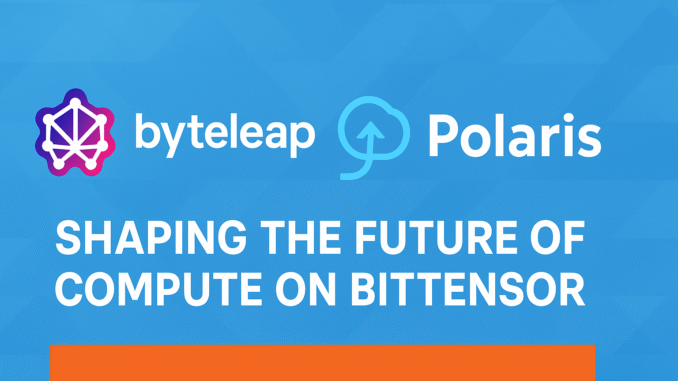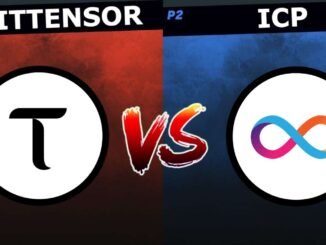
AI is reshaping the world, but every breakthrough and application still hinges on one scarce resource: compute. Today, that resource is trapped in centralized clouds run by a handful of tech giants. On Bittensor, however, two ambitious subnets are proving there’s another way.
a. ByteLeap (Subnet 128) is building a decentralized cloud optimized for performance-first workloads—training, inference, and orchestration on high-end GPUs.
b. Polaris Cloud (Subnet 49) is creating the “Airbnb for GPUs”—a permissionless marketplace where anyone can rent or supply GPU capacity.
Both tackle the same bottleneck from different angles: one is about maximizing raw performance through infrastructure design, the other about democratizing access through an open marketplace.
Similarities
ByteLeap and Polaris Cloud both run on Bittensor, using the miner/validator model to decentralize GPU power. They share the same mission: creating open, transparent, and censorship-resistant alternatives to centralized clouds, where contributors earn fairly and AI developers gain scalable, affordable compute.
Key Differences at a Glance
Despite their similarities, there are a few unique differences between ByteLeap and Polaris Cloud:
| S/N | Metric | ByteLeap | Polaris Cloud |
| 1 | Core Vision | Decentralized high-performance cloud for AI training & inference | GPU rental marketplace |
| 2 | Deployment Modes | Bare-metal, VMs with GPU passthrough, containers, Kubernetes orchestration | Simple plug-and-play via Polaris Node Manager |
| 3 | Infrastructure Backbone | Partnerships with IDCs, NVIDIA H200/H100/A100 down to RTX 5090 | Any contributor can supply GPUs, from gaming rigs to data centers |
| 4 | Performance Approach | Near-native latency, optimized hardware tuning, multi-region redundancy | Scales horizontally via many small providers |
| 5 | Ease of Entry | Targeted at enterprise/research teams needing specialized compute | Accessible to everyday GPU owners & AI developers |
| 6 | Target Users | Research labs, startups training heavy models, enterprises with latency-sensitive needs | Indie developers, small teams, researchers needing affordable GPU access |
Why This Matters
ByteLeap raises the ceiling on performance. By combining bare-metal with GPU passthrough and orchestration layers, it feels like a decentralized AWS for AI—built for scale, low-latency inference, and heavy training runs.
While Polaris Cloud lowers the barrier to entry by letting anyone contribute or rent GPU power, it feels like a GPU Airbnb—cost-efficient, open, and censorship-resistant.
Both projects ultimately challenge centralized providers, but they serve different slices of the AI economy. ByteLeap is enterprise-grade infrastructure. Polaris is grassroots compute liquidity.
The Bottom Line
The race for decentralized compute isn’t about one winner—it’s about choice. Some users will prioritize speed, orchestration, and resilience (ByteLeap). Others will prize openness, affordability, and inclusivity (Polaris Cloud). Together, they sketch out what the next era of AI infrastructure could look like: not monopolized by a few hyperscalers, but distributed across networks anyone can join.




Be the first to comment